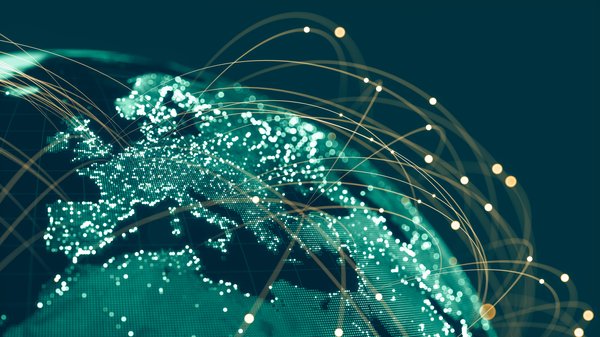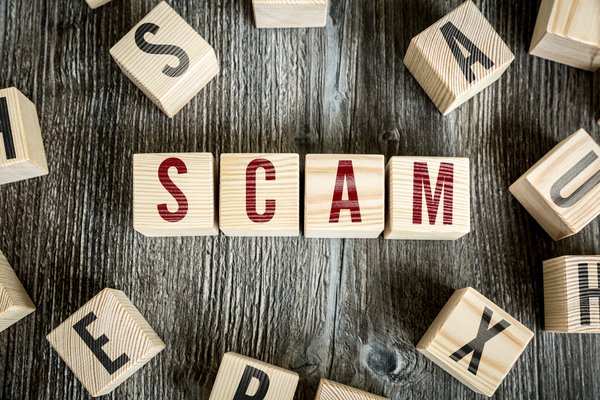An initial coin offering (ICO) is an event where a company sells a new cryptocurrency to raise money. Investors receive cryptocurrency in exchange for their financial contributions.
In many ways, an ICO is the cryptocurrency version of an initial public offering (IPO) in the stock market. While it's possible to make sizable profits through ICOs, a lack of regulation makes them extremely risky. In this guide, you'll learn all about ICOs, including how they work and some notable examples.

How do initial coin offerings (ICOs) work?
When a company decides to have an ICO, it announces the date, rules, and buying process in advance. On the date of the ICO, investors can buy the new cryptocurrency.
Most ICOs require investors to pay using another cryptocurrency, with Bitcoin (CRYPTO:BTC) and Ethereum (CRYPTO:ETH) being two common choices. There are also ICOs that accept fiat money.
The purchase process typically involves sending money to a specified crypto wallet address. Investors provide their own recipient address to receive the crypto they buy.
The number of tokens sold during an ICO and the token price can be either fixed or variable. Here are examples of the ways this can work:
- Fixed number of tokens and price: The company sets both of these ahead of time, such as offering one million tokens at a price of $1 per token.
- Fixed number of tokens and a variable price: The company sells a fixed number of tokens and prices them based on the amount of funds it receives. More funding results in a higher token price. If it's selling one million tokens and raises $2 million, each token would have a price of $2.
- Variable number of tokens and a fixed price: The company sets a fixed price but doesn't limit the number of tokens it will sell. An example would be if a company sells tokens at $0.50 apiece until the ICO ends.
Anyone can launch an ICO. Because of the low barrier to entry, many new types of cryptocurrency are launched through this process.
How to start your own ICO
At the most basic level, starting your own ICO is a matter of creating a cryptocurrency token, setting a date, and making rules for the token sale.
To successfully raise funds, there's much more that goes into the ICO process. The most important part is having a cryptocurrency project that people are interested in supporting. You also need to determine how the cryptocurrency you launch will fit into the project. And, during the ICO process, you'll need all of the following:
- A whitepaper outlining your project
- A roadmap with short- and long-term goals
- Market research on other ICOs
- A website
- Social media presence
- A marketing campaign
With all that goes into an ICO, it takes a dedicated team to be successful. You can create a team yourself or work with an ICO company that specializes in these offerings.
ICO vs. IPO
ICOs are often compared to initial public offerings (IPOs), a new stock offering by a private company. Both ICOs and IPOs allow companies to raise funds.
The primary difference between ICOs and IPOs is that IPOs involve selling securities and are subject to much stricter regulations. A company that wants to conduct an IPO must file a registration statement with the U.S. Securities and Exchange Commission and get its approval. The registration statement should include a prospectus that provides financial statements and potential risk factors.
An ICO is the sale of a cryptocurrency, not a security. For that reason, it doesn't have any formal requirements like IPOs do. But if a company tries to get around requirements by conducting an ICO for something that fits the definition of a security, it could run into legal troubles.
Although both ICOs and IPOs have their risks, IPOs are safer because they're regulated. If you're overwhelmed by all the ICOs out there, the best IPO stocks are worth a look as an alternative.
How are ICOs regulated?
ICOs are largely unregulated. In the United States, there aren't any regulations that apply specifically to ICOs. However, if an ICO fits the classification of a securities offering, then it falls under the SEC's jurisdiction and is regulated by federal securities laws.
Some countries have taken a strict stance and banned ICOs entirely. Countries that have banned ICOs include China, Nepal, Bangladesh, Macedonia, Bolivia, and Ecuador.
Advantages and disadvantages of ICOs
ICOs have their pros and cons. Here are the advantages they offer:
- They offer high potential profits if you can determine which cryptocurrency is a good investment. Since you're buying early, prices are often lower, and some ICOs offer tokens at discounted rates.
- ICOs are accessible to anyone. Unlike some IPOs, there aren't any restrictions on who can invest.
- It's a fast, efficient way for start-ups to raise funds.
Here are the disadvantages of ICOs:
- Because cryptocurrency projects are volatile, there's a significant risk that the token loses value or ends up failing entirely.
- The lack of regulation results in more scams and mediocre projects. Just sorting through upcoming ICOs for a quality project can feel like searching for a needle in a haystack.
- It usually takes some knowledge of crypto wallets to invest in ICOs. For those who are new to crypto, it's often easier to stick to cryptocurrency stocks or publicly traded coins.
Examples of an initial coin offering (ICO)
ICOs are an extremely popular way to raise money in the crypto space. Most fail, but there's also the occasional diamond in the rough. Here are some examples of major ICOs over the years:
- Ethereum: Lots of crypto enthusiasts were excited about Ethereum and its programmable blockchain when its July 2014 ICO took place. It ended up raising $18.4 million and then became the second-largest cryptocurrency.
- Cardano (CRYPTO:ADA): Cardano improved on aspects of Ethereum and had an even more successful ICO. In January 2017, it raised $62.2 million. It would eventually break into the top five cryptocurrencies by market capitalization.
- Tezos (CRYPTO:XTZ): Tezos raised $232 million through its ICO in July 2017, but it wasn't a complete success. There were numerous delays in distributing the tokens sold through the ICO, leading to a class action lawsuit. Tezos reached a $25 million settlement with all parties in 2020.
- Dragon Coins (CRYPTO:DRG): There have been many failed ICOs, and Dragon Coins is one of the most high-profile examples. In March 2018, it raised $320 million. A series of controversies caused a near-immediate price drop when it was available for public trading. In 2021, its market capitalization fell below $1 million.
Investors are drawn to ICOs for the dream of buying in early to a successful cryptocurrency. Although this is possible, it takes considerable research and time sorting through the vast numbers of upcoming ICOs. Considering the risk involved, it's best to approach with caution.

























































































































